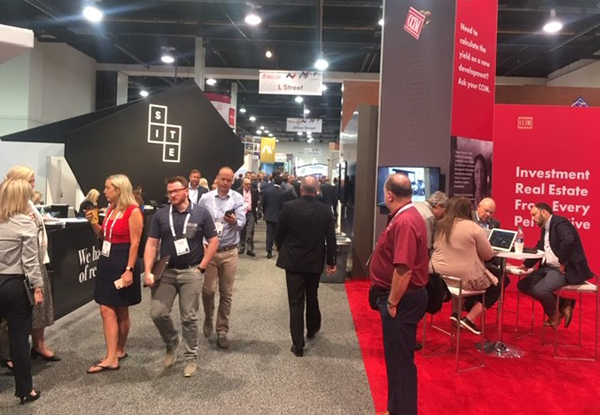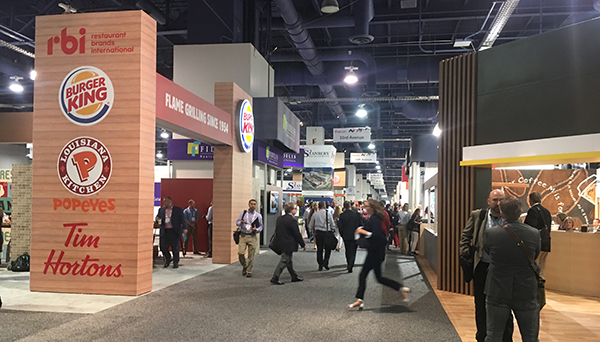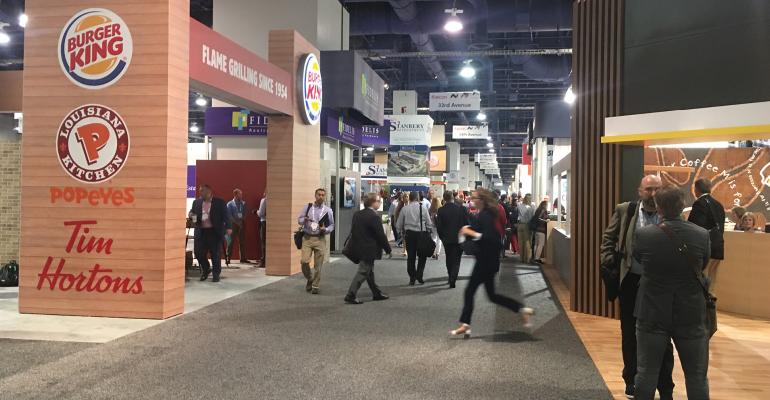On day two of RECon 2019 retail real estate professionals discussed actionable items retailers can incorporate to make their bricks-and-mortar locations more attractive. Once again, retailers offering value, health services, food and beverage and experiences were help up as examples. Here are some topics discussed during the second day of the show.

- Retail healthcare clinics have grown by 47 percent in the last three years. Research from real estate services firm JLL shows the growth of retail-based healthcare and how the format is rapidly becoming a top choice for filling vacant spaces at shopping centers. As other retail tenants sign shorter leases, landlords are finding that healthcare tenants usually have higher credit ratings, sign longer term leases compared to traditional retailers and tend to stay in the same location for a long time due to the high costs of build-outs and moving of medical equipment, according to Greg Maloney, CEO of JLL Retail. At the end of 2017, there was an estimated 2,800 medical clinics at retail centers in the U.S., up from 351 in 2006, according to consulting firm Accenture. Applying that growth rate to the healthcare industry, the number of healthcare tenants in retail locations could almost double by 2022.
- Fitness clubs are becoming a larger presence at U.S. shopping centers. The global wellness economy accounted for $4.2 trillion in 2018, up 12.8 percent from two years before, according to the Global Wellness Institute. The number of fitness tenants at shopping centers has more than doubled over the past decade, from 6,218 in 2008 to more than 14,000 in 2018. For this reason, fitness centers can function the same way former anchors once did, as traffic drivers, according to ICSC research.
- Capital invested this year will be spent on well-located shopping centers or urban retail corridors in either primary or high growth secondary markets. The average deal size on single-asset retail transactions in the first quarter grew by 28.9 percent in primary markets, and 20.5 percent in secondary markets, as investors become more willing to pay higher prices for well-positioned assets, according to JLL research. But this trend is becoming a cause for concern for mall owners in tertiary markets. Some malls in these areas will likely have to go through adaptive reuse, with malls and offices a common combination.
- Bricks-and-mortar locations are doing well as consumers seek experience and convenience. An ICSC survey indicates nearly 80 percent of consumers visit physical stores as much or more than they did two years ago. Sixty-one percent of consumers choose bricks-and-mortar locations for entertainment, while 53 percent choose bricks-and-mortar for dining.
- Customers expect fresh new stores and concepts. Nearly 37 percent of shoppers expect to see new and innovative retailers in their centers in the next 10 years, according to JLL. Around 33 percent of shoppers want to see more entertainment and dining options, while 16 percent want to see non-retail uses mixed into their shopping centers. Due to this, shopping centers will need to incorporate tenants that offer additional experiences outside of selling traditional merchandise, JLL researchers state. This means shorter term leases might become more common at retail centers, as emerging brands may not be ready to sign long-term leases.
- Is free same-day delivery sustainable? Around 38 percent of shoppers will expect same-day delivery in the next 10 years, JLL found. To accomplish this, savvy retailers will need to invest in smart logistics, smart warehouses and self-driving vehicles to help with last mile costs. Still, in order for same-day delivery to be successful in the long term, retailers will have to shift the cost onto consumers, who will eventually have to pay for the cost of delivery. Today, as companies battle for increased market share, consumers can expect to be treated to free same-day delivery in some cases.
- The rise of the “retail marketplace.” So-called retail marketplaces connect existing retailers with bricks-and-mortar portfolios to brands that are interested in renting space within an already functioning store. This allows established retailers to host new and emerging brands in their locations, thereby creating new experiences for shoppers. This type of retail space sharing can become more mainstream with more and more retailers joining in, JLL predicts.

0 comments
Hide comments




